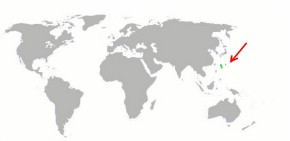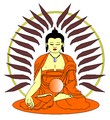Coulla
From Confederacy
Nihonkaranws (Talk | contribs) |
Nihonkaranws (Talk | contribs) |
||
| Line 1: | Line 1: | ||
| - | {{Infobox Country | native_name = | + | {{Infobox Country | native_name = ''Sunweng Toshim Kaeng Wappon'' <br> Constitutional Monarchy of Coulla| |
common_name = Coulla| | common_name = Coulla| | ||
image_flag = Newcoullaflag.jpg| | image_flag = Newcoullaflag.jpg| | ||
Revision as of 21:47, 13 July 2008
| |||||
| Motto: Chiseng Wappon Ka Nuk Raeng Wan Chuime Chisoba | |||||
| Anthem: Fueng Po Suiko Sanatasang | |||||

| |||||
| Capital | Nawako | ||||
| Largest city | Nawako | ||||
| Official language(s) | Coullan | ||||
| Demonym | Coullan | ||||
| Government Prime Minister
| Constitutional monarchy Yuakoshi Amakitawa | ||||
| Independent Senzen Rittam Prana Xi Lang Chuime Chura Constitutional monarchy | 266 714 1067 1219 1474 1953 | ||||
| Area | 148 417 km2 | ||||
| Population • 2008 est. • 2003 census | 292 110 000 (4th) 289 415 762 | ||||
| GDP (PPP) • Total • Per capita | 2008 estimate $5.623 trillion (1st) $55 473 (4th) | ||||
| GDP (nominal) • Total • Per capita | 2008 estimate $5.623 trillion (1st) $55 473 (4th) | ||||
| Gini | 39.3 | ||||
| HDI (20032008) | 0.952 (9th) – high | ||||
| Currency | Yu (CYU)
| ||||
| Time zone | Coulla Time CST | ||||
| Internet TLD | .cl | ||||
| Calling code | +74
| ||||
The Constitutional Monarchy of Coulla (Coullan: sunweng toshim kaeng wappon) is an island nation in Southeast Asia. To its north lies Japan; its east, the Pacific Ocean; its South, the Philippines; and to its west, Taiwan and China. The tropical nation depends on high-tech/manufacturing industries, tourism, and several small oil fields as its primary resources for income. Its capital and largest city is Nawako, home to the imperial palace grounds and the parliament.
Contents |
Etymology
Coulla had several names throughout its history, the most notable being Chuime and Chura. During British influence in the 1700s, Coulla was natively known as "Chura". While trying to communicate with the Coullans, the British tradesmen mistook the word "Chura" for "Coulla", and to this day it is known as Coulla to westerners. Today, Coulla is known natively as "Kawappon", and part of the word ("wappon") is used in the full name "Sunweng Toshim Kaeng Wappon".
History
Coulla has been inhabited by man since the paleolithic period (10 000 years ago). It is known that rice farms and other forms of cultivation took place later on, and that people were already living in straw houses by 4000 BC. It is believed that Coullan people originally descended from the Indo-China region of Asia.
The earliest known major kingdom of Coulla was the Senzen Dynasty, which took up most of the Senzen Period (266 to 714). The Kingdom of Senzen took up most of the southern area of Honabei, the main island of Coulla. During this time, the Senzen region's primary resources were rice cultivation and chicken.
After the fall of the Senzen Kingdom, the dynasty known as Rittam Prana took over and held power over most of the island of Honabei from 714 to 1067. During this time, the kingdom was under influence by explorers from China and Thailand, and Coulla developed its own form of Buddhism, Zai Buddhism, after being converted under influence from mainland Southeast Asia. In 1061, Chinese emperor Tang Xi Lang came across the islands, and eventually took over parts of Rittam Prana, and began the Xi Lang Dynasty, which lasted only 5 years (1067 to 1072). During this time, Coullans adopted Chinese characters as the writing system for the Coullan language.
The army that defeated the Xi Lang Dynasty took over most of Coulla, and became known as the Chuime Kingdom. The kingdom took over 4 of the main islands of Coulla (Honabei, Kitotsu, Hitotsu, and Jiraiga from 1072. The kingdom was ruled by Emperor Yappa Gatsunat, who ruled over the kingdom as a powerful warlord. The Chuime Kingdom was later renamed to Chura, and took over all of Coulla. It remained the power over Coulla until 1953, when Coulla was changed to a constitutional monarchy after a bloodless revolution.
Politics
Government
Coulla's government is a constitutional monarchy where the power of the emperor is very limited. Modeled after Canada and the United Kingdom, the government holds national elections of a prime minister every four years, in which all citizens of Coulla above the age of 18 have the right to vote.
Coulla's major parliamentary organ is the National Wing, which consists of 420 seats in the House of Representatives, 240 seats in the House of Councillors, and 190 seats in the House of Legislativitees. Coulla's government is a direct member of the United Nations and the Confederacy of Free Regions. Coulla remains close ties with fellow nations such as the United States, the United Kingdom, Japan, Hypertrophy, Kaibesia, and Canada.
Legal System
Influenced by German civil law, Coulla's legal system supports the rights of every human, supporting articles such as the UN Convention on the Human Rights and the UN Convention on the Rights of the Child. Due to some errors in Coulla's infrastructure, the people living in more rural areas of Coulla, especially southern Coulla, have less rights and are under minor oppression by the government. These errors can be compared to poorer countries such as the Philippines and Vietnam.
Education
The people of Coulla enjoy a high level of literacy, and its school system is comprised of kindergarten, primary, and secondary schools through 11 grades. Public school runs from 8:00am to 4:00pm weekdays, from September 10th to July 25th. The private sector, or post-secondary education of Coulla plays a major role in the overall education of citizens of Coulla. Some examples of these institutes are The University of Nawako-Honabei, Kika University, and the Prada-Haiko Institute of Technology. Laws provided by the Coullan Ministry of Education provide that all post-secondary institutes are free.
Administrative divisions
Coulla is divided into 86 prefectures (wannat), which are grouped into 6 main groups (Honabei, Kitotsu, Hitotsu, Jiraiga, Kayoko, and South) by location. Major cities such as Nawako and Tesuryioku that take up all of their prefecture are subdivided into city wards, but this is not the case with all prefectures.
Prefectures (excluding major cities), are subdivided into towns and cities, which have their own mayor and elections. Most capital cities of each prefecture have the same name as the prefecture. For example, the capital of Intomul Prefecture is Intomul City, which is home to the legislative branch for that prefecture.
Geography
At 148 417 square kilometers, Coulla is the world's 94th largest country by land mass, whilst it is the world's 4th largest country by population. It is comparable in population to the United States, and is similar in land size to Malaysia and Thailand.
Coulla is comprised of over 1000 islands, ranging from the largest island of Honabei to the smallest island of Chisokumaku-Iti. Coulla's main geographical characteristic is mountains, making 80% of Coulla unsuitable for agricultural, residential, or industrial development. This has resulted in an extremely high population density in Coulla's habitable areas, making it the most densely populated country in the world, with a population of over 200 million.
Located on the Pacific Ring of Fire, Coulla is prone to major tremors and earthquakes and occasional volcanic activity. Because of a major tectonic fault in the Sea of Coulla, Coulla's eastern coast is prone to tsunamis, the most recent being the 2006 Hama Tsunami, which completely destroyed many parts of the southern coast of Coulla's main island of Jiraiga.
Coulla's climate is primarily tropical, and its climate has resulted in Coulla being home to a major tourism industry. Almost every city in Coulla has several resorts, and Coulla is the only country in the world other than French Polynesia to have overwater bungalow hotels. As a result, Coulla is a favorite among vacationers.


